How to Measure Food Without a Scale
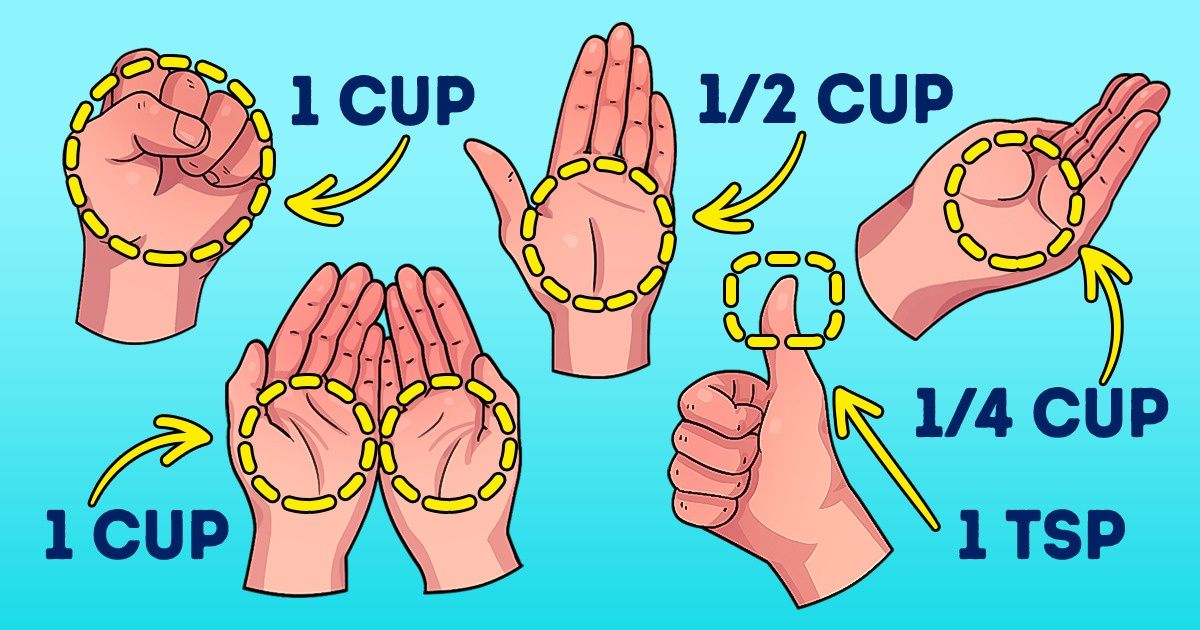
If you follow a diet, knowing how much your food weighs is key. However, you might not always have a scale with you, especially when you don’t eat at home. Luckily, your own hand or a plate can help you to easily weigh most foods. 5-Minute Crafts will show you how to do it.
1. Using your hand to estimate serving sizes
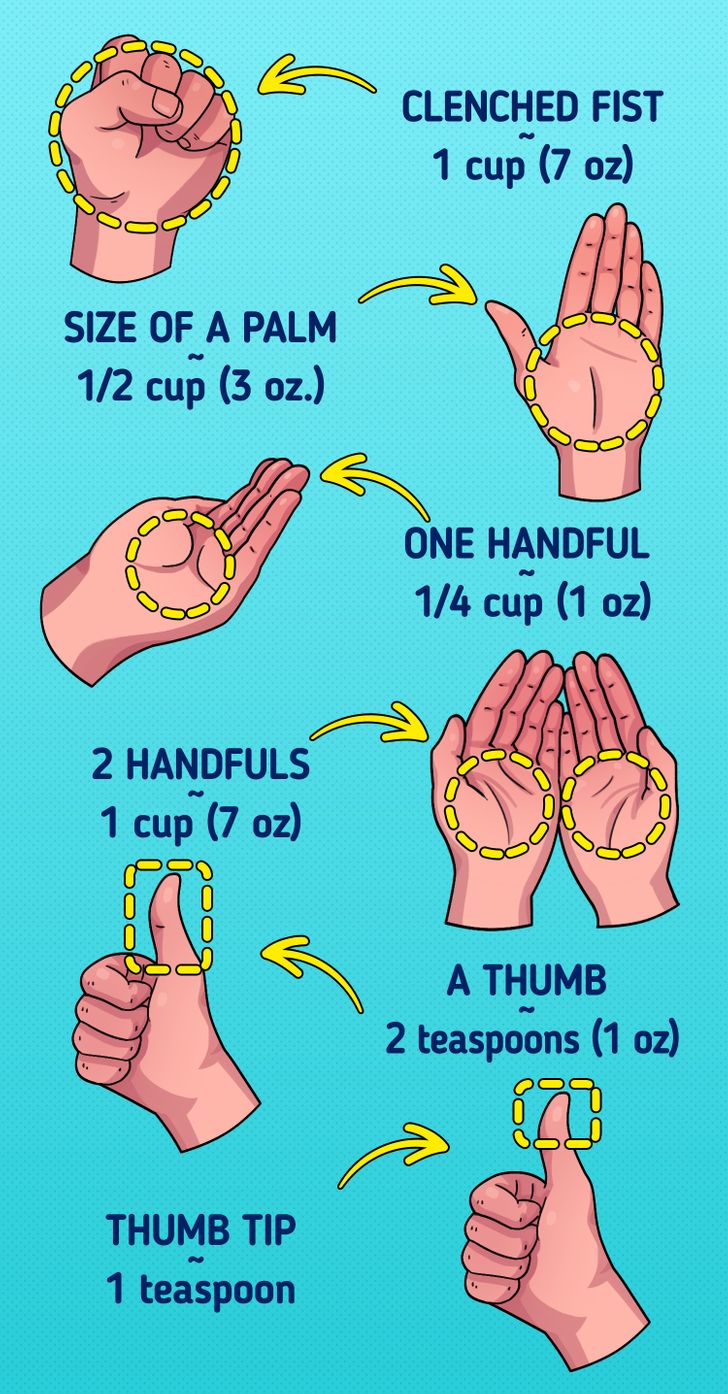
Your hand can you to tell the approximate size of a serving:
🖐 One handful ~ 1/4 cup (1 oz)
Useful for estimating: nuts, seeds, dried fruit.
🖐 Size of a palm ~ 1/2 cup (3 oz)
Useful for estimating: proteins like chicken, beef, fish, shellfish, tofu. One serving of dry pasta is 1/2 cup.
🖐 Clenched fist (or cupped hand) ~ 1 cup
Useful for estimating: cooked oatmeal, rice, pasta, potato, fruit, cornmeal.
🖐 2 handfuls ~ 1 cup
Useful for estimating: vegetables.
🖐 A thumb ~ 2 teaspoons (1 oz)
Useful for estimating: peanut butter, hard cheese, butter, dressings, mayonnaise.
🖐 Thumb tip ~ 1 teaspoon
Useful for estimating: all oils, margarine, mayonnaise.
2. Using your plate to estimate food weight
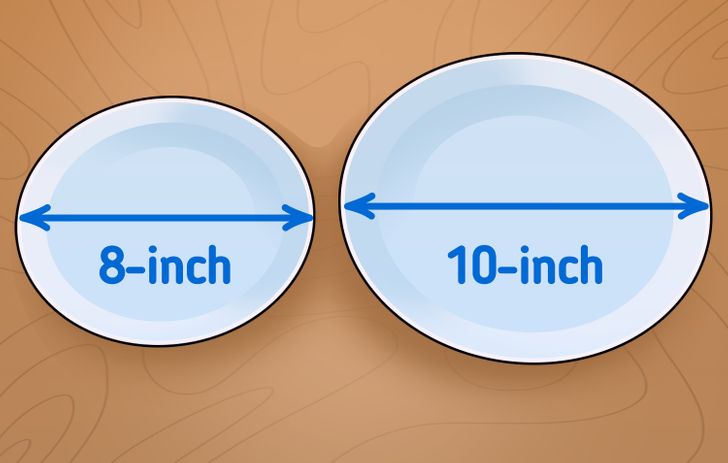
For this, you will need a smaller plate for salads or appetizers that is 8 to 9-inches (20-22 cm) in diameter and a larger dinner plate that is 10 to 12-inches (25-30 cm) in diameter. Place your food on it to get the approximate weight.
- 1/4 of an 8-inch plate — approximately 1/2 to 3/4 cups of food.
- 1/4 of a 10-inch plate — approximately 1 to 1 1/2 cups of food.
- 1/2 of an 8-inch plate — approximately 1 1/2 to 2 cups of food.
- 1/2 of a 10-inch plate — approximately 3 cups of food.
🌮 Don’t forget that the actual portion size also depends on the way you pile it on your plate. One of the ways to control your portion sizes is to leave some space between different foods so that they don’t touch each other. This way you will make sure that you do not overfill the plate and don’t eat anything extra.
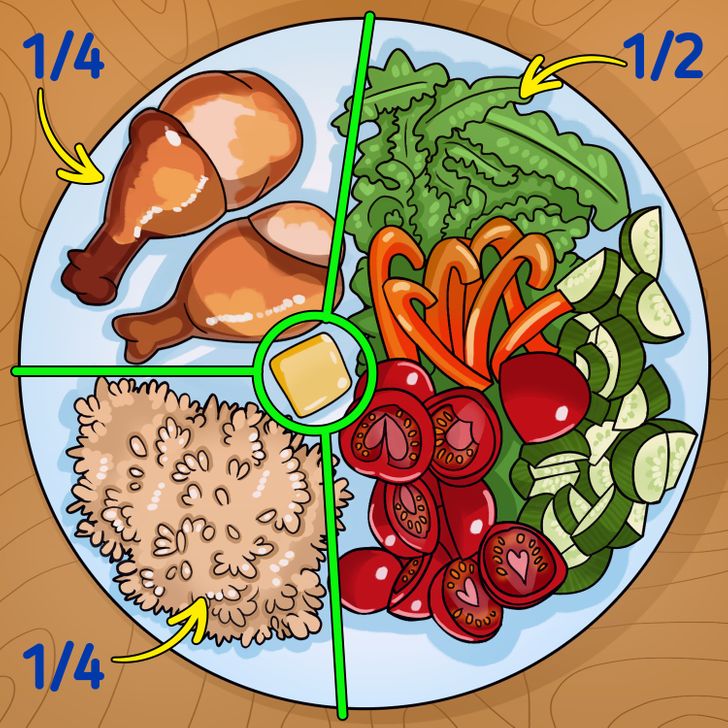
If you want to lose weight take the picture above as a reference for healthy portion control. When filling your plate, make sure you:
🥙 Fill 1/2 of the plate with nonstarchy vegetables. They are full of vitamins, fiber, and anti-oxidants. Also, they make you feel full for longer. Non-starchy vegetables include:
- Artichokes, beets, Brussels sprouts, broccoli, cabbage (green, bok choy, Chinese), carrots, cauliflower, cucumber, daikon, greens (collard, kale, mustard, turnip), salad greens, onions, tomatoes.
🥩 Fill 1/4 of the plate with protein. It helps you to build muscles and feel full.
🍠 Fill 1/4 of the plate with carbohydrates. They will provide you with energy. You can use fruits, starchy vegetables, beans, whole grains, and foods made with flour (cereal, bread, crackers, and pasta).
🧈 Add a couple of teaspoons of fat. Focus on healthy fats like olive oil, avocados, and nuts.
3. Using objects to estimate serving sizes
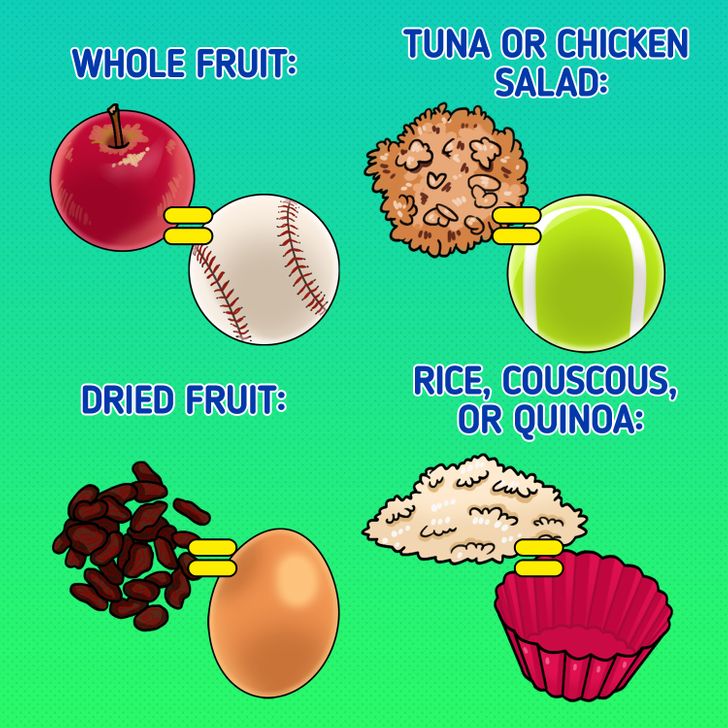
A portion size is the amount of food you put on your plate, while a serving size is a standard measurement of food (for example, in ounces, grams, or cups).
🍎 A serving size of whole fruit is 4 oz (110 gram), which is approximately the same as the volume of a baseball.
🐟 A serving size of a tuna or chicken salad is 1/2 can, which is approximately the same as the volume of a tennis ball.
🍇 A serving size of dried fruit is 1/4 cup, which is approximately the same as the volume of an egg.
🍚 A serving size of rice, couscous, or quinoa is 1/3 cup, which is approximately the same as the volume of a silicone cupcake mold.
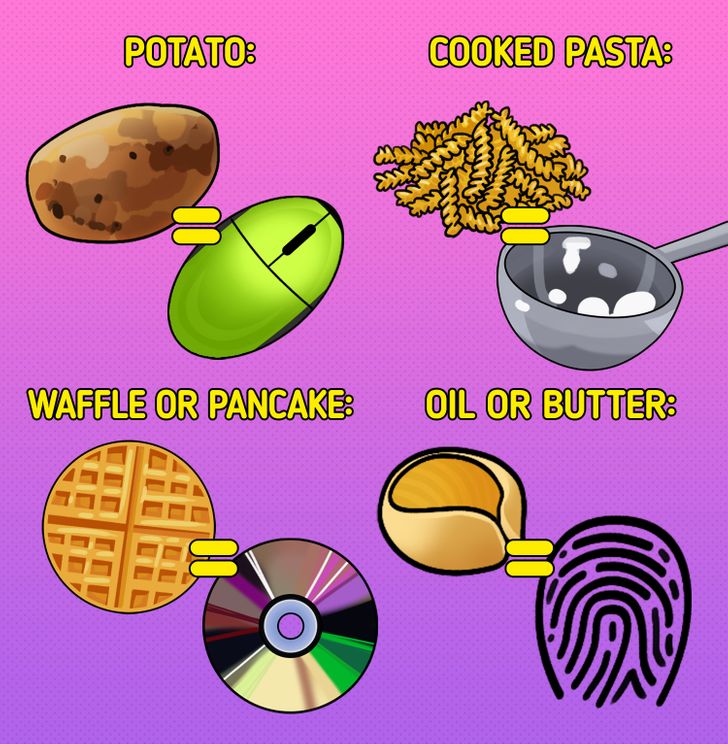
🥔 A serving size of a potato is 3 oz (85 gram), which is approximately the same as the volume of a computer mouse.
🍝 A serving size of cooked pasta is 1/3 cup, which is approximately the same as the volume of an ice cream scoop.
🧇 A serving size of a waffle or pancake is 1 piece, which is approximately the same as the size of a compact disc.
🧈 A serving size of oil or butter is 1 tsp, which is approximately the same as the size of a fingerprint.
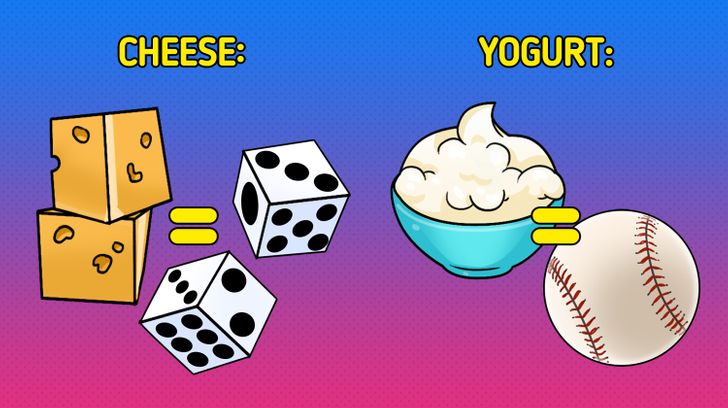
🧀 A serving size of cheese is 1 oz (28 gram), which is approximately the same as the volume of 2 dice.
🥛 A serving size of yogurt is 2/3 cups, which is approximately the same as the volume of a baseball.